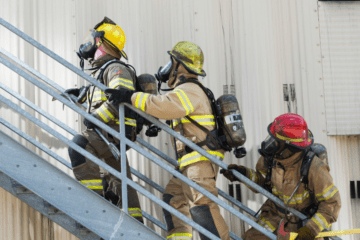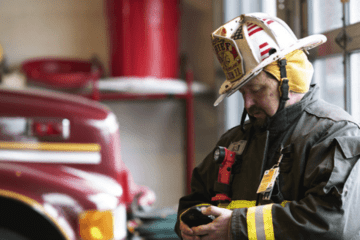In 1967, the Federal Communications Commission (FCC) sat down to discuss an important issue: the creation a universal emergency number. One telephone company came to the table, choosing 9-1-1 – a short, simple code that was easy to dial on the then commonplace rotary telephone. That company was AT&T, and that number is now ubiquitous and at the forefront of anyone’s mind when faced with an emergency.
Our world today looks vastly different than it did in 1967, especially when it comes to communications. For example, what did you imagine at the mention of the rotary telephone? You may not even be able to conjure up an image of this device. Understandably, since as of January 2023, a whopping 96% of Americans aged 18-29 own a smartphone1 – not a rotary phone.
- And seniors aren’t far behind with 86% of Americans aged 50+ owning smartphones.2
While the rotary phone may not have stood the test of time, our national emergency number did. In fact, it’s estimated 240 million calls are made to 9-1-1 in the U.S. each year – with 80% or more of calls coming from wireless devices in many areas.3
So how do we help ensure those 240 million calls get where they need to go each year? It’s all about innovating and investing in the communications technology of today – and of the future.
The good news: We’ve been in the business of making connections for 147 years. And we’re just getting started.
As we continue building out our wired and wireless networks, we have public safety in mind. Our fiber and advanced wireless connections, like 5G, are helping connect communities to first responders when and where they need it most in 3 big ways.
1. Pinpointing the location of an emergency
When you place a call to 9-1-1, how are first responders able to locate where the emergency is? Traditionally, wireless 9-1-1 calls were routed based on the location of cell towers, which can cover up to a 10-mile radius. This can cause delays in emergency response. Now, thanks to new location-based routing technology from AT&T and Intrado, a device can be located and routed within 50 meters of the device location. This translates into time – and lives – saved in the face of an emergency.
2. Creating more ways for citizens to connect to help
With new advancements in technology, like Next Generation 9-1-1 (NG911), citizens can provide information about their emergency using voice, image and text messages – not just by phone call. So, while a landline used to be the only way to reach 9-1-1, today you can report your emergency with your smartphone, smart watch or voice-activated virtual assistants.
- In fact, in 2021, over half a million incoming texts-to-9-1-1 were reported nationwide.4
3. Providing enhanced critical information to first responders
Just like citizens can contact help in more ways, dispatchers can now equip first responders with those images and texts to provide more accurate information about the situation at hand before arriving on the scene. NG911 enables dispatchers to share more accurate location data, images and other critical information to help assess the emergency.
The bottom line: Technologies like fiber and 5G are powering the future of emergency communications. And as we continue to invest in building out our networks, more Americans will benefit from the innovation that follows.
Whether your cat is stuck in a tree or a loved one is experiencing a medical emergency, faster and more accurate communication helps both citizens and first responders in the face of a crisis. Let’s keep innovating together to create a safer, more connected community.
1 Share of tech users among Americans 65 and older grew in past decade | Pew Research Center
2 2023 Tech Trends: No End in Sight for Age 50+ Market Growth (aarp.org)
3 9-1-1 Statistics – National Emergency Number Association (nena.org)
4 2021-911-Profile-Database-Report_FINAL.pdf





